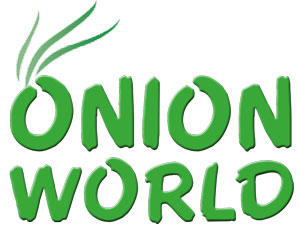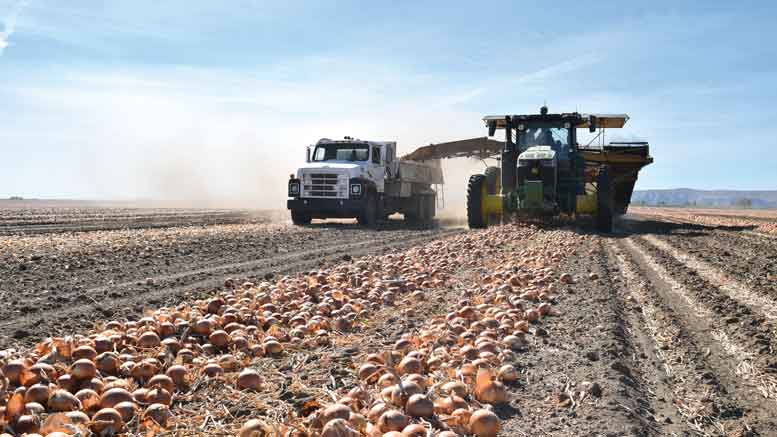|
Click to listen to this article
|
Story and photos by Denise Keller, Editor
After nearly a decade working on the farm where his family has grown onions for a quarter century, fourth-generation farmer Damon Christensen is finally figuring the crop out. A series of small changes is helping him grow better onions than ever before – and yet, that isn’t stopping him from continuing to fine tune the program.
Christensen grows 700 acres of fresh-market onions in Mattawa, Washington. Yellow onions account for 350 acres, with red onions planted on another 250 acres and whites making up the last 100 acres. In addition, the family grows 2,100 acres of potatoes, as well as wheat and beans when ground availability allows.
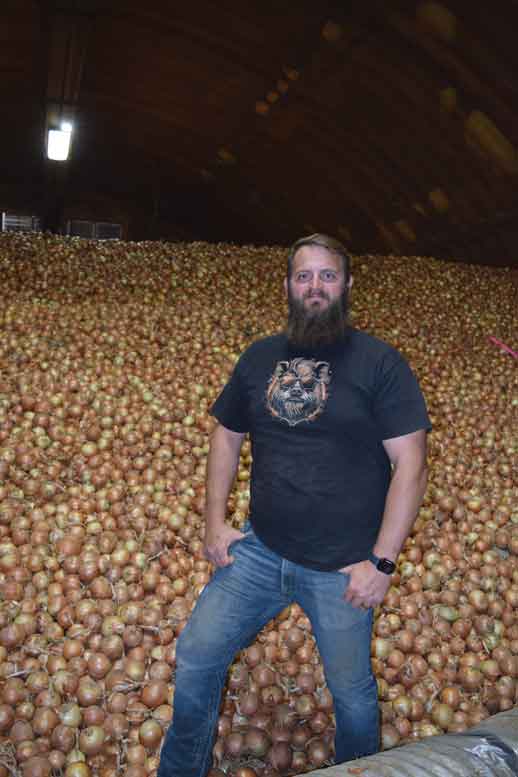
Always Adjusting
Since beginning to work with a new consultant in the last couple years, Christensen has been making subtle changes to his onion program that have resulted in noticeable improvements in the crop. For example, he has been carefully adjusting the amount and timing of fertilizer applications and has learned that he can grow onions with about half as much fertilizer as he had been using.
Knowing that onions are sensitive to competition, he has adopted different weed control strategies, opting to lean more heavily on pre-emergent control tactics to reduce the reliance on the limited options available to knock down weeds.

Christensen has also made changes to irrigation in the interest of cost savings. While he used to strictly use drip irrigation in onions, more acres are now under overhead irrigation than drip. Initially, bulb quality took a hit, but after adjusting inputs such as fertilizer and herbicides, overhead irrigation is the more cost effective option for certain cultivars, the grower says. However, drip is still used for varieties with thicker necks in order to keep water from entering the bulbs through the necks and causing bacterial problems.
To manage diseases and pests, Christensen has been using more biological products and composts as part of his effort to dial in on sustainability. The farm also took part in three chemical trials last season including testing a peptide product in onions.
“It’s mostly for stress tolerance, but also overall nutrient efficiency. We’re getting in a realm where we’re trying to maximize productivity. We’re hoping the peptides come in and help us use less fertilizer in the end and maximize the effect, and we hopefully see that in a size and quality difference in the end,” the grower says. “It’s still pretty new technology. There are a lot of studies being done right now. I kind of want to get in on the front of that and see how it goes.”
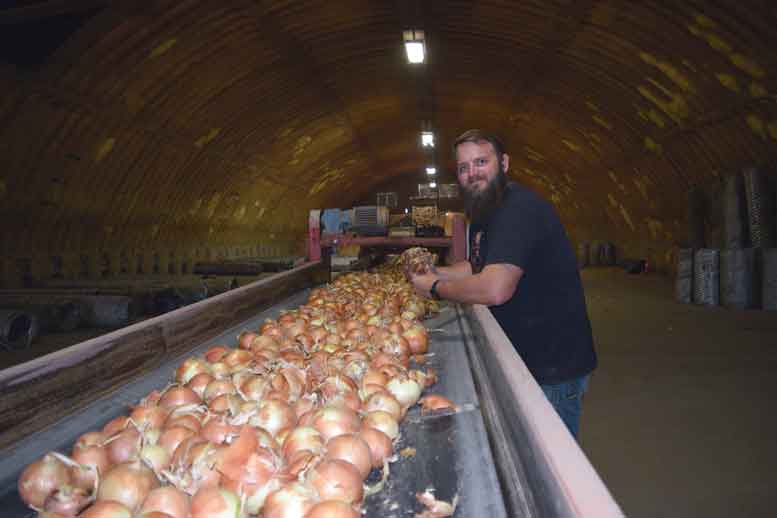
Aerial Applications
Christensen also utilized new technology by making chemical applications via drones last year, applying crop protection products, fertilizers and peptides, mostly in potatoes. In onions, he used drones to apply herbicides and learned how not to do things, he says, as strips of weeds emerged in areas the chemicals missed. He found that making two half-rate applications and staggering the drones could help achieve more even coverage. This year, he plans to apply herbicides via ground rig, but might use the drones for cover sprays and chemical trials in onions.
Overall, the first year of drone spraying was a good learning experience, and Christensen is working to find the best way to incorporate the technology into the program. While a crop duster still has the advantage in terms of speed and efficiency – covering a 120-acre circle in 45 minutes compared to three hours with two drones – its usage can be limited by the field’s location and the plane’s availability.
“Drones bring the control to me. The timing is my timing. When we have a problem, instead of calling and asking when an airplane can come spray, it’s ‘hey, we have a problem, the chemical is in the barn, let’s go out there now and go spray,’” Christensen says.
In some cases, he adds, drones provide better spray coverage and also offer a greater ability to customize applications.
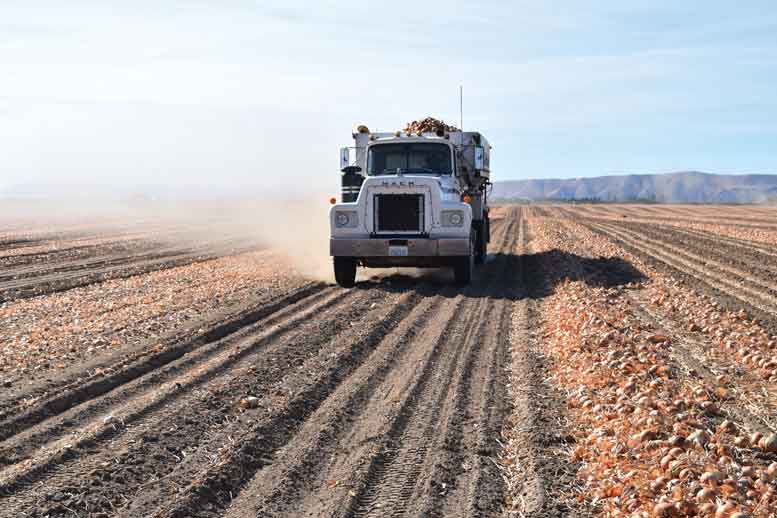
Family Farm
Through all the changes, Del Christensen & Sons has remained a family farm for four generations. After Damon Christensen’s great-grandparents lost their dairy in Idaho during the Great Depression, they moved to Kittitas, Washington. They then followed the Columbia Basin irrigation project’s expansion south, moving to Royal City in the 1950s and settling in Mattawa in the ‘70s. Christensen’s dad, Del, started farming in the early ‘80s, added onions to the rotation in the late ‘90s and started packing onions in the early 2000s.
Christensen was always involved on the farm, but was encouraged to try other things. After working for a hay farmer, going to college and getting married, he moved home and began working on the farm in 2012. Realizing that he enjoyed agronomy, he went back to school the next year before returning to the farm in 2016.
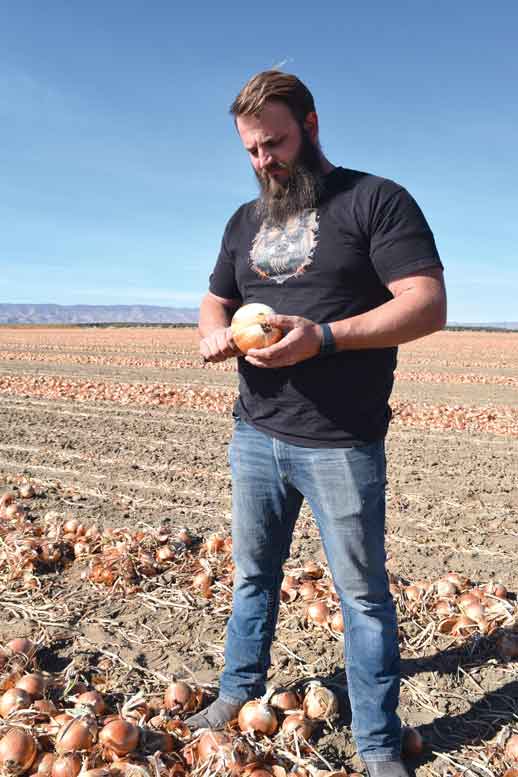
“I realized I liked the science side of farming, being able to make a plant grow. There’s a balance in all things; it’s not just putting a seed in the dirt and letting it grow and watering it. There are 10,000 different things you can do to that thing – maybe even 10 million. It’s fun trying to find which one works and which one doesn’t. I’ve had plenty that don’t work and plenty that do work, and sometimes you sit there and scratch your head and wonder why did that work and this one didn’t,” Christensen says. “It makes you want to keep trying.”
Today, Christensen farms with his dad and three brothers. A pair of brothers manages the packing operations, with Alex taking the lead on onion packing and Dexter running the potato sheds. Meanwhile, the other two brothers run the farm, with Dallon managing the people and Damon handling agronomy.
“I love doing it. There’s something about putting that onion seed in the dirt and watching it come out in the end,” Christensen says. “It’s a fun game. The biggest gamble you can make in life, but it’s a fun game.”
